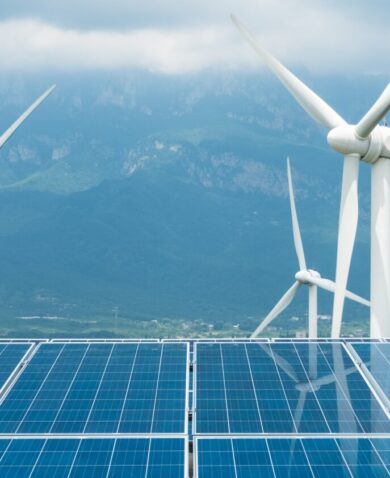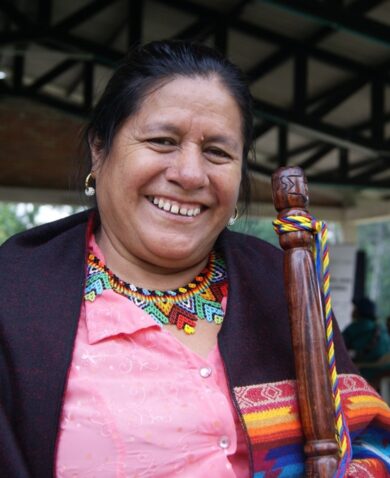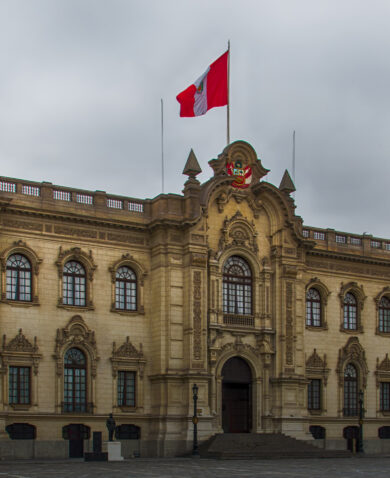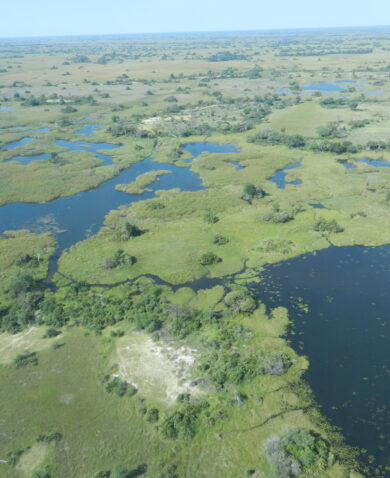
The Politics of Biodiversity: Two Experiences with Thinking and Working Politically
November 29, 2018 | 4 Minute ReadWhat does thinking and working politically on biodiversity projects look like? Carolyn Heaps shares experiences and lessons learned from projects in Guatemala and Indonesia.
What do forest and species loss have to do with politics? A great deal, in fact. Conserving and protecting natural resources involves a complex set of power dynamics, interests, and economies — licit and illicit — that affect how a program can operate within an existing local system. Biodiversity programming must embrace a Thinking and Working Politically (TWP) approach to understand and navigate political ecosystems. This approach to development is grounded in three principles: political insight and understanding, responsiveness to the domestic environment, and flexibility and adaptability in project design and implementation. Through political economy analysis (PEA), we can gain insight into local actors’ relationships and motivations by studying the dynamics between different groups and analyzing how those dynamics may impact development objectives.
Two Chemonics-implemented projects — USAID Guatemala Biodiversity project and USAID Build Indonesia to Take Care of Nature for Sustainability (BIJAK) — have recently shown how biodiversity programs can successfully embrace a TWP approach to do development differently. I asked leaders from both projects why TWP makes sense for their project, how they are using TWP-PEA in practice, and what advice they have for other project leaders interested in TWP-PEA.
Why does TWP make sense for these two biodiversity projects?
TWP is helpful for both projects because they depend on buy-in and ownership from multiple stakeholders to achieve their desired outcomes. Launched in July of this year, the Guatemala Biodiversity project works alongside the national government and local stakeholders to build management and governance capacity within the national system of protected areas. The project works locally across three pilot areas with countless people invested in biodiversity conservation — from sea turtle rescue volunteers shepherding endangered hatchlings to the southern Pacific Ocean to smallholder farmers at the edge of the northern Maya Biosphere Reserve. According to the project’s Chief of Party Carlos Morales and Policy Component Lead Rodolfo Cardona, TWP has allowed the project team to identify activities it can carry out to encourage participation from these groups and ensure sustainability.
BIJAK, in its third year of implementation, focuses on national interventions to strengthen policies and management capacity for protecting Indonesia’s forests from habitat and species loss. When the project’s Project Management Unit Director David Fratt was serving as BIJAK’s interim chief of party, he observed that the project team could amplify the project’s many successes and ensure their sustainability if it developed a deeper understanding of the political dynamics among government ministries and other stakeholders. As the project transitioned from supporting legal adoption of policies to supporting implementation of these policies, buy-in for sustainability became a critical question. David and current Chief of Party Symantha Hoblen wanted to better understand what incentivized key actors and how those incentives might evolve. For example, BIJAK seeks to improve data sharing across ministries with different mandates and priorities. By using TWP and PEA, the project will use knowledge of stakeholder incentives to influence improved data sharing.
How are the projects using TWP and PEA in practice?
Under the Guatemala Biodiversity project, TWP was integrated in the project’s design, which included an initial PEA to map actors, conduct research, and hold conversations with stakeholders in the project’s pilot areas. Three months into the project, I traveled to Guatemala City to support a training workshop for more than 15 project staff and partners. The workshop, facilitated by Chemonics’ Democracy and Governance Practice Director Sharon Van Pelt, covered both theory and practice of TWP-PEA. During the initial PEA in October and November 2018, conversations revealed some interests that aligned with project objectives and other interests that were barriers to planned activities. For example, the project initially intended to help collectivize fishery production to support fishermen in marketing their goods. By conducting the PEA, the project learned that the fishmermen were already working together to achieve the benefits of collective sales, but they were not sharing means of production, like fishing equipment, due to disagreements between family-owned businesses about operations. These operational differences would not be conducive to organizing under a collective, so the project rethought its strategy to instead embrace a decentralized and mobile structure for value chain support to the fishermen.
The BIJAK team, in contrast, first formally integrated PEA into its recently submitted third-year work plan. David has been asked why he didn’t do this sooner. He says the team has been thinking and working politically on some level since the beginning, but he sees the project as well-positioned now to formally evaluate stakeholder dynamics through a PEA to inform how the project will support the rollout of policy changes adopted in its first two years. To get the team up to speed, TWP-PEA expert and Chemonics consultant Santiago Villaveces-Izquierdo will train members in the coming weeks to integrate TWP more completely in their work. The team doesn’t anticipate the PEA will point to the need for drastic changes, but that it will help tailor their approach to planned activities. For example, the PEA may identify which national parks are backed by more political will and can pioneer the rollout of improved park management schemes.
What lessons can be shared with project leaders seeking to utilize TWP-PEA?
Whether a project is in its early stages of design or nearing the end of its execution, continuous adaptive management through methods and tools like TWP-PEA is strategic. After his experience on BIJAK, David shared that projects shouldn’t be afraid of making changes to their approach mid-implementation — or later.
After their initial PEA, Carlos and Rodolfo have the following advice to share:
- Don’t seek information from traditional information channels. If you do, you run the risk of receiving information that only protects the status quo.
- Seek opinions from people of different age groups, genders, economic backgrounds, and from those who oppose your work to understand their motivations. They will play an important role in the project.
- Rely on existing social coalitions and networks to enable and facilitate local dialogue.
- Identify the “fruit ripe for the picking” (e.g., concession holders dedicated to working collectively to economically benefit from their forests) to engage quickly and generate a positive project environment.
- Refine your analysis in regular team “pause and reflect” sessions; this will help adjust the project approach (the way you are doing things) quarterly and the strategy (the direction and the logical next steps) annually.
By protecting biodiversity, development practitioners usually don’t conserve for conversation’s sake. Rather, we seek to benefit the people that rely on biodiversity for ecosystem services, for income, and for cultural heritage. TWP-PEA is important for biodiversity projects because, in the words of Carlos and Rodolfo, “It requires [the team] to leave aside paradigms and personal or institutional beliefs and assume a position of empathy; to take the pulse and better understand the needs, aspirations, hopes, and frustrations of local actors.”
In other words, TWP-PEA responds to the people the projects intend to benefit.
Photo Credit: Rodolfo Cardona
Posts on the Chemonics blog represent the views of the authors and do not necessarily represent the views of Chemonics.




























































